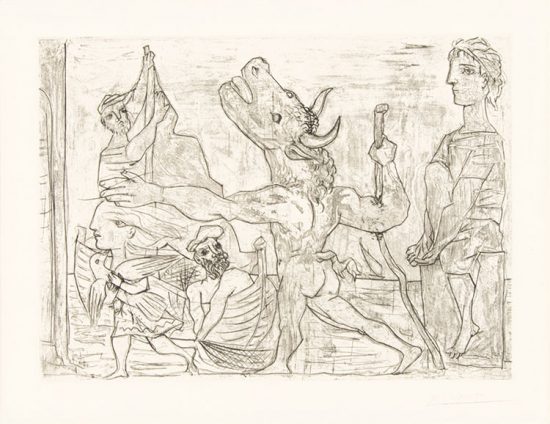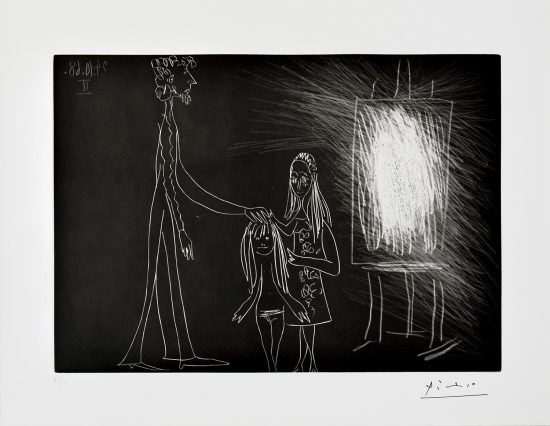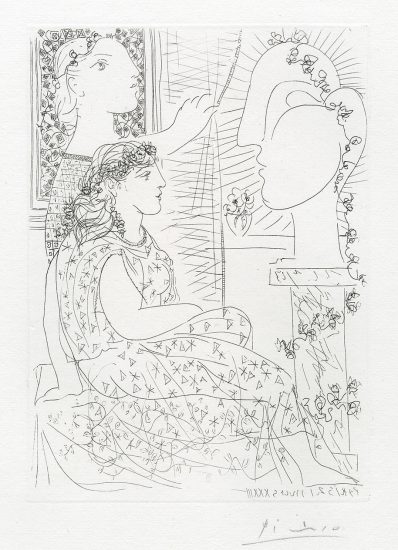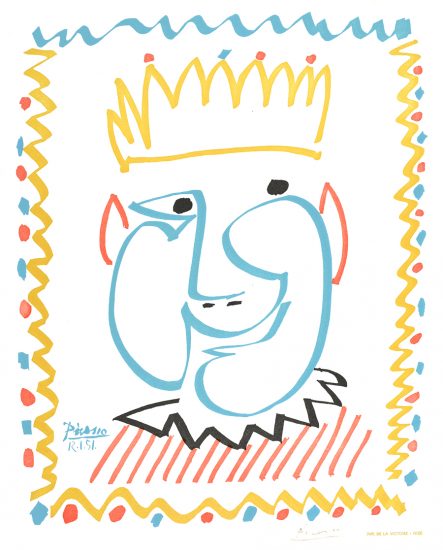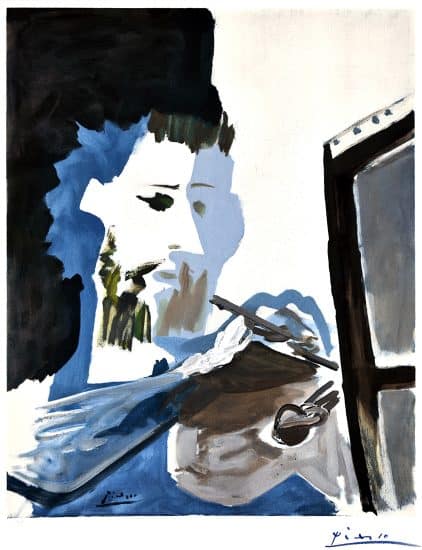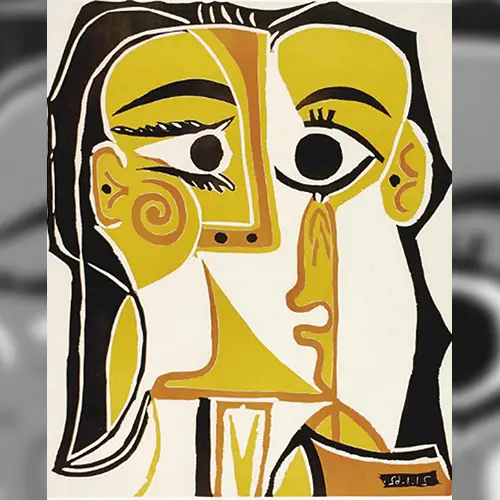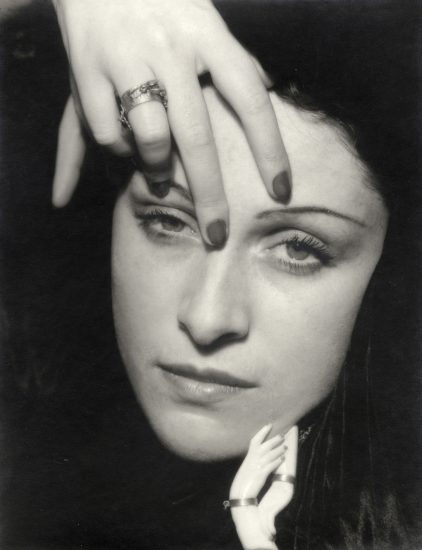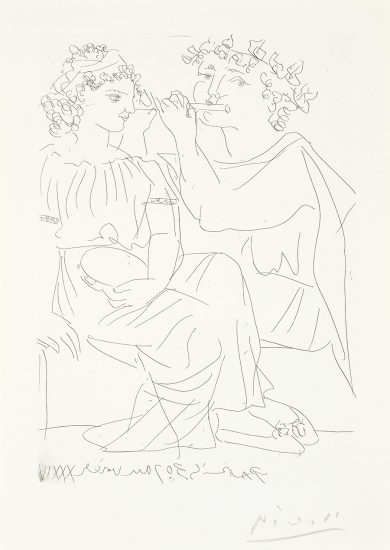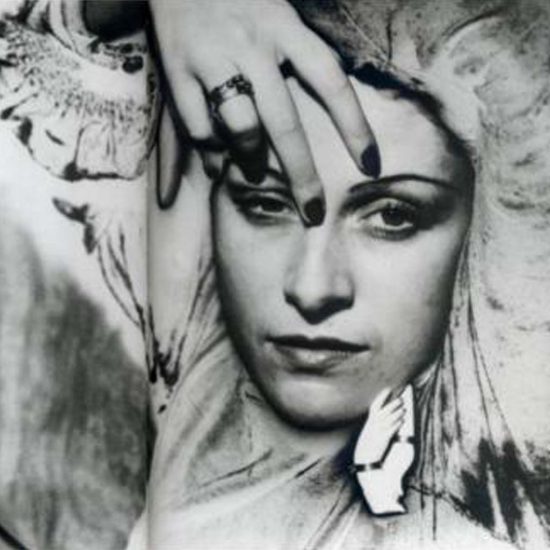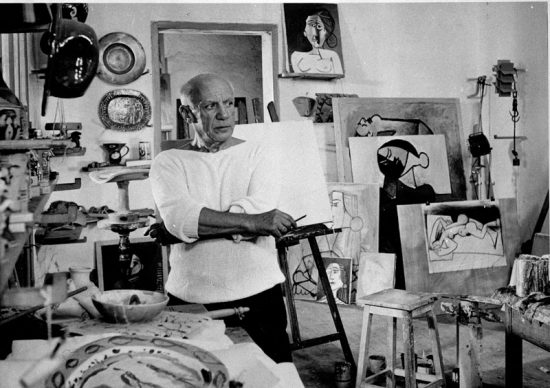Françoise Gilot was born in 1921 in Paris, France to Emile Gilot and Madeleine Renoult-Gilot. Her father was an agronomist and her mother was an artist specializing in watercolors and ceramics. Her father was overbearing and had very different ideas for Françoise’s life than she had for herself. Determined at the age of 5 to be an artist, her mother Madeleine began tutoring her in watercolors.
She achieved a BA in Philosophy from Sorbonne, and completed an English degree at Cambridge. In 1939, near the beginning of the war, Gilot was sent by her father to law school in Rennes, where she was pushed to pursue international law. Much of Gilot’s early work was destroyed in World War II. In 1940, during a protest, Gilot was one of many placed on a list of hostages that were not allowed to leave the city of Paris and had to report to local authorities every morning. The Germans were very suspicious of French law students, so Gilot leaves during her second year and becomes a secretary for her father’s business as well as a fashion designer. In 1941 her father paid for Gilot to be taken off the list, but she could not yet safely resume her studies.
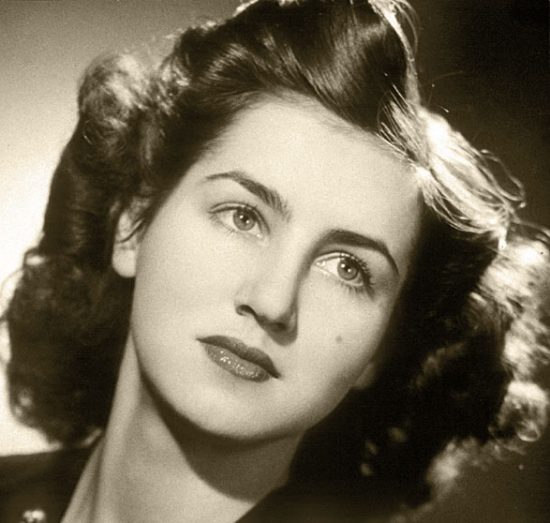
The first meeting between Gilot and Pablo Picasso occurred in 1943, when they were dining next to one another in a restaurant. He approached her table with a bowl of cherries and started talking to Gilot and friend Genevieve. At the time, Gilot and Genevieve were putting on a show, which they invited Picasso to see. He did, much to the delight of Gilot. Around this time, Gilot made the final decision to fully embrace her artistic career, which caused her to become estranged from her father. During the next three years Picasso and Gilot saw much of each other as she continued to work on her art and travel.
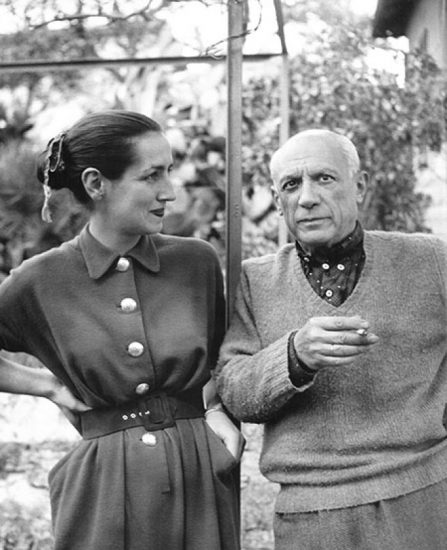
In 1946, Picasso convinced a reluctant Gilot to move in with him, and they began their romance. After some convincing from Picasso, Gilot gave birth to their first child, Claude, in 1947. The new family moved to Vallauris in 1948, following the start of Picasso’s interest in ceramics. Their second child, Paloma Picasso, was born in 1949. Gilot and Picasso would split their time between Vallauris and Paris, as they worked on their art and raised their children. One of the reasons that Picasso was attracted to Gilot was because she was his intellectual equal. She became the only woman to leave Picasso in 1953, after enduring his temper for 10 years.
In 1954, Gilot met Luc Simon, an artist, and the two married in 1955. Together they had a daughter, Aurelia, and though they had a happy marriage, eventually they split in 1961, remaining on good terms. During this time, Gilot faced some backlash from ending her relationship with Picasso. An art dealer who used to exhibit her work terminated her contract due to pressure from Picasso, his other client. In 1957 Gilot obtained a new contract with Galerie Coard and continued to create and exhibit her work in Paris. Throughout the mid-1960’s her reach grows, and she began to exhibit internationally.
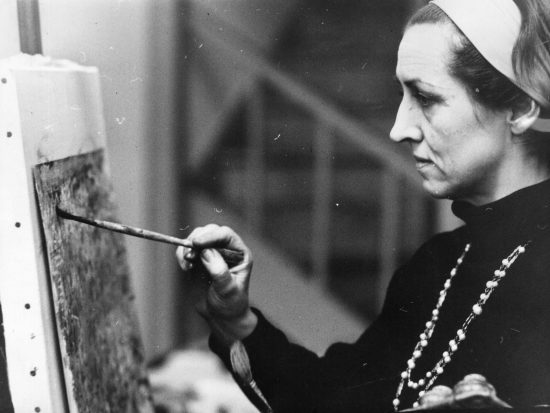
Gilot published Life with Picasso in 1964, which gave an incredible, and overall not glowing, account of her life with the artist. Picasso was outraged and sued three times in an attempt to stop further publishing of the book. He failed in each and eventually admitted defeat to Gilot in the last conversation they ever had.
In 1970 Gilot married Jonas Salk, the creator of the polio vaccine. They had a happy marriage that ended with his abrupt death in 1995. Since then, and during this time, Gilot continues to create her art and exhibit all over the United States and the world. She spent much of her time between La Jolla, where Salk lived, and New York and Paris where she maintained studios. Her vast oeuvre speaks for itself and the incredible life that Gilot has built with her own two hands.

Reference:
- The F. Gilot Archives. Accessed October 12, 2016. http://www.francoisegilot.com/frames.html
- Kazanjian, Dodie. “Life After Picasso: Françoise Gilot,” Vogue, April 27th, 2012. Accessed October 12, 2016.
http://www.vogue.com/865350/life-after-picasso-franoise-gilot/https://www.vogue.com/article/life-after-picasso-franoise-gilot - Lacher, Irene. “A Place of Her Own: Culture: Francoise Gilot, Picasso’s former love and Jonas Salk’s wife, wants to be known not as the companion of great men, but as their equal,” LA Times, March 6th, 1991. Accessed October 12, 2016. http://articles.latimes.com/1991-03-06/news/vw-83_1_francoise-gilot

